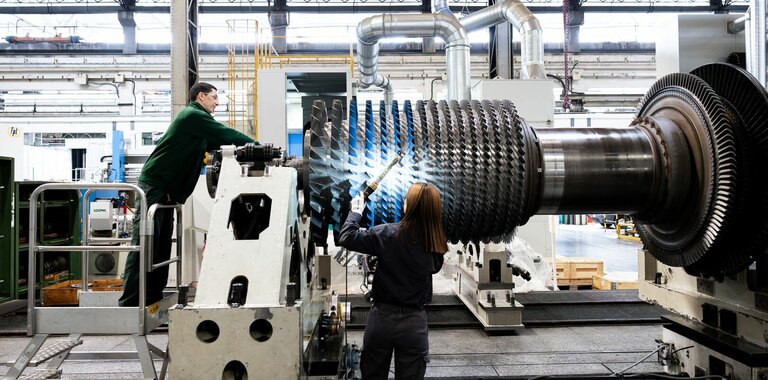
What's in a name: Machine Criticality
Often, the hardest messages to convey – yet invariably the most effective – are those with the fewest number of words.
Most anybody can get their point across (eventually) given enough pages. But will your reader persist long enough to actually get your message? The challenge is increasingly not “Can you get your point across?” but “Can you do it in 3 seconds?” It does not help that we are bombarded with messages vying for our attention, either. Lunio.ai[1] estimates that in the 1970s, the average person was exposed to 500-1600 ads per day while today, that number is about 10,000 per day. No wonder people will give you only 3 seconds max.
The problem is not necessarily new, but it is increasing. People that advertise on billboards have faced the 3-second challenge for years – and the problem became more acute as the speed of vehicles increased. Not only is space limited, but so is time. You have only so many seconds for the driver of that vehicle to take notice and then ingest whatever it is you have to say before the back side of your sign is now in their rear-view mirror.
In our business, the brevity challenge is often in the nomenclature we use. Too many words become unwieldy. Too few words become inaccurate or misleading.
Nowhere is the challenge bigger than in how we choose to denote the criticality of machinery.
For many years, our solutions have been primarily associated with “critical” machinery. But that’s changing. And it begs the question: what exactly is meant by “critical”?
It turns out the answer is both easy and difficult. And as our solutions have become more pervasive in new industries, the opportunities for confusion grow.
That Was Then
Historically, the customers that were most likely to instrument their machinery with Bently Nevada hardware systems were those in the continuous processing industries where certain machines ran 24/7/365 and – because of their large expense – were un-spared. Examples of such processes include electricity generation and petrochemical manufacturing. It is not uncommon for such machines to run without stopping for 3-5 years at a time (or even more) between planned outages. There are relatively large populations of such machines in these industries, ranging from less than a dozen to perhaps 100 or more depending on the process and scale. Not surprisingly, they were our earliest customers and remain very loyal to this day.
Not only are these machines un-spared, but they are also often physically large and if they fail, the parts are expensive along with the specialized labor. For example, the First Stage Blades (FSBs) on many of today’s gas turbines cost upwards of $2M.
But as expensive as parts and labor might be, the downtime (lost production) is often the most economically painful of all.
Consider the so-called “crack spread” in a refinery: the gross margin between the cost of a raw barrel of oil and the refined products it produces from that barrel. Historically, the crack spread has averaged around $10.50 USD. As I write this, however, that spread is at an all-time high of $35 per barrel[2]. So, in a 250,000-bpd refinery, if an un-spared machine upon which the entire refining process relies were to fail, this translates to $7M per day or nearly $300K per hour. So even the expense of FSBs in this example would be easily eclipsed by a single day’s downtime. Similar stories could be repeated in multiple industries.
There’s also the model of several machines in a process, any one of which will not result in total loss of production, but nevertheless substantial reduction. A combined cycle power plant is a prime example. It might have two 1:1 gas turbine/steam turbine units, each producing 600 MW. If one gas turbine fails, the plant’s output is cut by 50%. Just like I mentioned “crack spread” earlier, in the power generation world is the analogous concept of “spark spread” – the difference between the selling price of the electricity and the cost of the natural gas to produce it. Today, the spark spread in the UK is about £16/MWh for base load supply and £46/MWh for peak supply[3]. Skipping all the intermediate calculations and conversions, the bottom line is that if one unit goes down in the above example, it equates to the loss of about $500,000 USD per day in profit. But as substantial as this is, it represents a 90% reduction over the peaks reached during parts of 2022. In other words, the loss of one unit for one day at the wrong time in 2022 meant $5M USD in profit down the drain. And because the price can vary by the hour, losing the machine for even one hour during periods of peak demand could be painful and exacerbated by penalties imposed.
Then there’s the issue of safety. Many processes involve flammable or toxic materials. Many machines (such as compressors and pumps) handle these toxic or flammable materials, and a machinery failure can represent more than just lost production and expensive repairs: they can represent fires, fines, and the costliest of all – loss of human life.
All this combined gives context on what we have meant historically when we talk about “critical” machines – machines possessing any one or more of the following:
- High costs of lost production
- High costs of repair
- Un-spared and critical to production
- Serious safety consequences of failure
The machines most often possessing these characteristics were large, un-spared, and incorporating fluid-film bearings. Large steam turbines, large compressors, large gas turbines, large Variable Frequency Drives (VFDs), etc.
As such, when we talked about “critical machines” historically, we often meant machines with proximity probes installed.
So that’s a lengthy but necessary background on why machines fitted with proximity probes were (and are) referred to as “critical” machines.
This Is Now
Our world today, however, is changing. We are finding ourselves more frequently in not just the so-called “plantwide” applications (i.e., all the other machinery in the plant besides that described above), but also in entirely new industries that may have smaller machines using rolling element bearings, but no less consequential in terms of impact to their operations. That pump, for example, might be relatively small, but an entire batch of pharmaceuticals might have to be scrapped if it fails at cost of several million dollars per batch. Or in another example, a fan that keeps a copper busbar cool might be belt-driven and involve only a hundred horsepower motor, but if it goes down for more than an hour an entire nuclear plant could be brought to a grinding halt along with the 1GW of electricity it produces.
We sometimes refer to machines with rolling element bearings as “Balance of Plant” (BoP) because those bearings typically characterize pumps, smaller motors, blowers, chillers, fans, and other machines that don’t have a direct impact on the process in our core industries of petrochemicals and power generation. But the truth is, those smaller machines can be highly consequential under the right circumstances. It turns out that 1GW of electricity was riding on a 100 HP motor, as one of our customers painfully conveyed. That machine wasn’t previously monitored; now it is. And that pharmaceutical plant? Its pumps are now all monitored with wireless IIoT sensors. Its processes may not run 24/7/365 and may instead be batched, but a failure at the wrong moment – as a batch is partway through completion – is just as consequential economically as the loss of a 600MW power generation unit.
We’ve had to rethink and retrain ourselves that “critical” machinery is often in the eye of the beholder.
It may have little to do with size or bearing types. It often has everything to do with the process and the machine’s role therein. Tossing out terms like “critical”, “essential”, and “BoP” at one time for us meant bearing types and frame sizes. Today, it increasingly means what it should have meant all along: what is the impact on the process and on safety – not just the cost of spares and whether a spare machine exists. Those spare pumps, for example, are quite worthless when the primary pump’s bearing has failed, the seal clearance has opened, the flammable working fluid has ignited, and the entire refinery is shut down to extinguish the problem that has spread from one pump to an entire process unit. And this little anecdote I’m relaying isn’t hypothetical. It reflects an actual occurrence that translated to a $16M loss from a pump that had been historically addressed with a portable data collection program. I’ll let you decide if that pump was “critical” or not.
Today we still talk about “critical” machines. And “essential” machines. And other categories. What has changed, though, is that we have a heightened awareness that a machine that’s critical in one industry or process may not necessarily be in another. And that we need to have solutions for all classes of machines – solutions that work together, are right-sized in terms of capabilities and costs, and that consider the failure modes of the machine along with the corresponding consequences – regardless of bearing type or frame size.
At one time, our world was defined almost entirely by machinery that was a candidate for online monitoring because that’s all we had to offer. And when you’re a hammer – as they say – the whole world looks like a nail. Today, our portfolio spans the entire spectrum, from online to offline, and we can be truly agnostic. A machine gets the type of monitoring it needs based on failure modes and consequences, exactly as it should be. And with the cost of technology falling steadily, along with considerably more flexibility in our commercial models for subscription-based solutions rather than conventionally owned solutions, the ability to apply the right technology to every machine in your plant has never been better or more affordable.
[2] Crawley, P., “2 Oil Refiners Posting Record Margins: Can the Trend Continue?” 28 Feb 2023, www.marketbeat.com
[3] “GB clean spark spreads fall 90% from highs, though remain elevated” Blog, 26 Jan 2023, www.timera-energy.com Accessed Mar 1, 2023.

